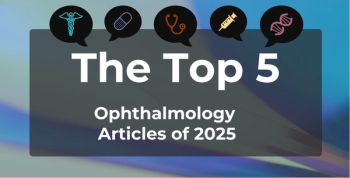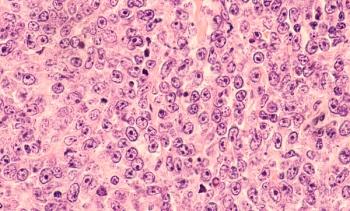
Methotrexate, Leflunomide Treatment Associated With Increased Possibility of Adverse Pregnancy Outcomes in Patients With RA
Pregnant female patients with rheumatoid arthritis (RA) treated with methotrexate and leflunomide within 3 months of conception faced an increased possibility of adverse pregnancy outcomes, specifically stillbirth or abortion.
Being treated with methotrexate (MTX) and leflunomide (LEF) within 3 months prior to conception was associated with an increased possibility of adverse pregnancy outcomes (APOs), specifically abortion or stillbirth, among pregnant female patients with
The researchers explained that many female patients with RA of childbearing age reported having trouble conceiving and a lower number of births. Consequently, pregnancy and childbirth require attention during treatment for female patients with RA.
Factors associated with prolonged time to pregnancy in these patients include high RA disease activity, older age, and the use of non-steroidal anti-inflammatory drugs (NSAIDs); NSAIDs can potentially prevent prostaglandin production, which plays a crucial role in ovulation and blastocyst implantation. Similarly, it is recommended that the use of conventional synthetic disease-modifying antirheumatic drugs (csDMARDs) MTX and LEF be stopped 3 months before conception as they are associated with a high risk of pregnancy loss.
However, in Korea, there is a lack of studies on pregnant patients with RA. Consequently, the researchers conducted a study in Korea to investigate medication utilization patterns during pregnancy and to identify factors associated with APOs in patients with RA.
To do so, they used the Korean National Health Insurance (NHI) database, which includes sociodemographic information, as well as health care utilization and national health examination results. The researchers extracted data on female patients with RA who claimed insurance between 2010 and 2020 with at least 1 code related to pregnancy; each pregnancy episode was considered for eligibility.
Since accurate conception dates could not be identified from the NHI data, the researchers estimated them inversely from the date of pregnancy outcome. Using these assumed conception dates as the index dates, they divided the pregnancy episodes into delivery and APO groups according to pregnancy outcomes to compare the patients' demographic and clinical characteristics.
The researchers investigated the pattern of medication use, including csDMARDs, targeted therapies (tumor necrosis factor [TNF] inhibitors, non-TNF inhibitors, and Janus kinase inhibitors), NSAIDs, and oral glucocorticoids in both groups. The analysis periods were 1 year before conception, during pregnancy, and 1 year after pregnancy. Because they considered medication use before pregnancy to be "the most important," the researchers divided the year before conception into 4 groups of 3 months to analyze it in further detail. After their investigation, the researchers identified associated factors for APOs in patients with RA.
Overall, the researchers included 5728 pregnancy episodes in the study, comprising of 4576 delivery episodes and 1152 APO episodes. They noted that the mean interval between the conception date and the diagnostic code of pregnancy confirmation was 37.7 days. Also, the mean (standard deviation [SD]) maternal age of patients based on total pregnancy episodes was 33.7 (4.1) years, the mean (SD) age being higher in the APO group than in the delivery group (33.7 [4.5] vs 33.3 [3.8] years; P < .001). However, in all pregnancies, the mean (SD) period from RA diagnosis to pregnancy was 3.2 (2.3) years.
The 2 groups especially showed differences in medication use in the 3 months before conception. The APO group used MTX, LEF, and NSAIDs more frequently as the delivery group stopped using MTX and LEF earlier before pregnancy; the prescription rates of both drugs were nearly zero during pregnancy in the delivery group. Also, targeted therapies were prescribed for 2.8% and 3.6% in the delivery and APO groups, respectively. Consequently, the 2 groups showed no significant differences in the use of targeted therapies, along with oral glucocorticoids.
Through the multivariable analysis, the researchers determined that patients aged 30 to 39 years (adjusted odds ratio [aOR], 1.33; 95% CI, 1.07-1.66) or 40 to 49 years (aOR, 5.35; 95% CI, 4.16-6.89) were at higher odds of APOs than those aged 20 to 29 years. Additionally, patients being treated for RA in a community hospital or clinic had slightly higher odds of APOs compared with those in tertiary referral hospitals (aOR, 1.33; 95% CI, 1.13-1.56). Lastly, MTX (aOR, 2.14; 95% CI, 1.57-2.92) or LEF (aOR, 2.68; 95% CI, 1.39-5.15) use in the 3 months before conception was associated with APOs.
The researchers acknowledged their study’s limitations, one being that information about RA disease activity was not available from the NHI data; because of this, it is unknown whether RA activity influenced APOs. Also, other factors associated with APOs, like smoking and body mass index, were not included because health examination data were unavailable. Despite these limitations, the researchers suggested future actions based on their findings.
“…it is crucial for patients with RA to engage in thorough consultations with their physicians regarding pregnancy planning, and to maintain medical supervision throughout pregnancy to effectively monitor and control disease activity,” the authors concluded.
Reference
Song YJ, Cho SK, Jung YS, et al. Medication utilisation trends during pregnancy and factors influencing adverse pregnancy outcomes in patients with rheumatoid arthritis. RMD Open. 2024;10(1):e003739. doi:10.1136/rmdopen-2023-003739
Newsletter
Stay ahead of policy, cost, and value—subscribe to AJMC for expert insights at the intersection of clinical care and health economics.







































